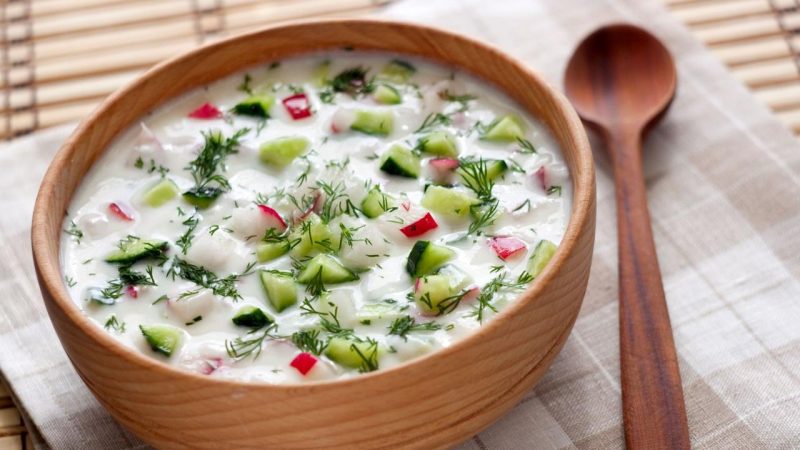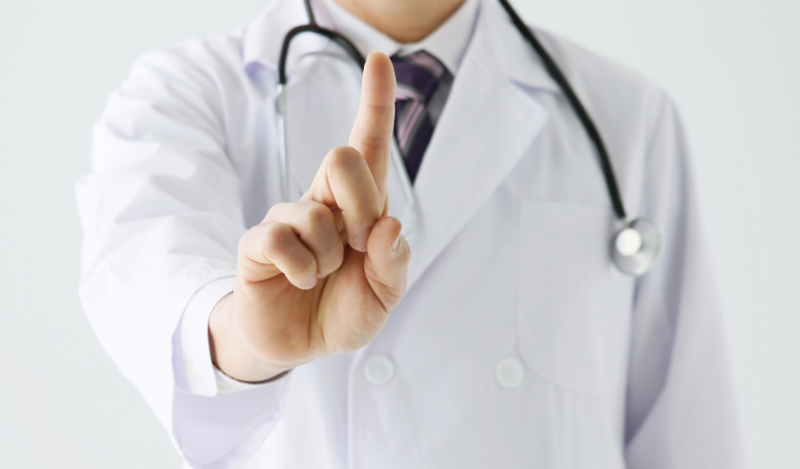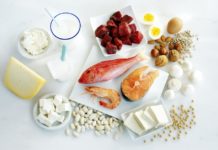Modern doctors are heatedly debating the question of whether dysbiosis is a disease or condition of the body, as well as regarding the causes of its occurrence. But experts agree on one thing: the diet for dysbiosis is an integral part of the treatment of this phenomenon, which violates the gastrointestinal microbiocenosis and provokes digestive upsets.
Material Content:
Basic rules and principles of diet
The discussed pathology provokes a quantitative and qualitative change in the bacteria that make up the microflora of the stomach. Those that are useful in it are becoming less and less harmful - more and more. The result of such "castling" often becomes diarrhea or constipation, bloating, various allergic manifestations.
Note. The reasons for the development of dysbiosis can be various. Often, the so-called dysbiosis is isolated after antibiotics taken to treat a particular disease. The composition of intestinal bacteria can change even as a result of a change in the usual food system.
To restore the bacteria necessary for the body, you must adhere to certain dietary rules:
- drink as much liquid as possible (2 liters per day);
- eat more dairy products and foods rich in fiber;
- optimal food temperature - 40 - 50 ° С;
- consumed food should be chewed as thoroughly as possible;
- breaks between her receptions cannot be shorter than 2 hours.
The diet during the period of illness must be observed carefully and strictly.
Allowed and Prohibited Products
Optimum nutrition for dysbiosis includes the following grocery list:
- bread flour 1 and 2 grades;
- various cereals;
- vegetables (zucchini, pumpkin, potatoes, cabbage, beets), legumes;
- steamed or boiled meat (turkey, pork, beef, chicken);
- fried eggs, eggs do not twist than "in a pouch" for a couple (total weekly number of eggs - no more than 2);
- dairy products (except milk, especially whole milk);
- low-fat fish (carp, pike, hake, perch);
- vegetable, butter (in particular, ghee).
The following types of products fall under strict taboo:
- bread of premium flour, muffin, pasta;
- fried, fatty meat: lamb, pork;
- fatty fish (sturgeon, salmon, flounder);
- fried eggs, hard-boiled or raw eggs;
- sausages, smoked meats;
- mushrooms;
- vegetables (cucumbers, turnips, onions, garlic, radish);
- canned food; mayonnaise;
- greens (spinach, sorrel).
Also, with a similar diagnosis, animal fats (pork, beef, mutton) should not be consumed.
Features of nutrition during pregnancy
For women bearing a child, a diet can replace drug therapy for dysbiosis. The diet of pregnant women suffering from dysbiosis should exclude fatty and sweet, spicy foods, smoked meats, gas-forming foods, etc. In addition to alcohol, carbonated drinks are also prohibited.
Expectant mothers should use fermented milk products more often, because yogurt, kefir and cottage cheese contain many useful bacteria that easily take root in the intestinal walls.
Also, these microorganisms create conditions that adversely affect the pathogenic flora - the main reason for the development of dysbiosis and dysbiosis.
Pregnant women often experience constipation, and therefore, their diet should also be fruits and vegetables. These products are rich in fiber, and therefore have a mild laxative effect.
In general, the treatment of dysbiosis in expectant mothers is not much different from similar therapy in relation to other people. The only difference is that pregnant women are not recommended to use most medications, and therefore, they should rely solely on the menu that is relevant in such cases.
The menu of the therapeutic diet for intestinal dysbiosis
For small and large patients suffering from manifestations of dysbiosis, it is useful to adhere to a detailed menu compiled specifically for such diagnoses.
For adults
An approximate menu that is recommended to follow during a diet with intestinal dysbiosis in adults:
- Breakfast. Steam cutlets (from fish or meat) / porridge from rice on the water. Black tea (it is permissible to add no more than 1 tsp. Sugar).
- 2 breakfast. Cottage cheese (better prepared independently).
- Dinner. Soup on a weak beef broth. Meatballs, mashed potatoes (it is permissible to replace rice / buckwheat in water). Kissel / broth of wild rose.
- An afternoon snack. Rosehip tea / broth, crackers. The latter are best dried on their own, as various additives are present in store crackers.
- Dinner. Rice (wheat, oat) porridge / steam cutlets.
Before going to bed, it is permissible to drink a glass of jelly.
Tip. For a day, it is permissible to use black bread (150 g) or crackers made from it. Do not dissolve in tea more than 2 tsp. Sahara.
For children
Intestinal dysbacteriosis in children allows the introduction of the following dishes in the menu:
- Breakfast. Soft-boiled egg / boiled fish with buckwheat. Tea with 1 tsp. Sahara.
- 2 Breakfast. Apple / 250 ml of natural juice. It is permissible to give the child 1 tsp. natural honey (he should dissolve the product in his mouth).
- Dinner. Potato / boiled vegetables soup (carrots, potatoes, beets). Compote on dried fruits.
- An afternoon snack. Pureed beetroot / carrot salad. Rosehip broth.
- Dinner. Cottage cheese or pudding made on its basis. Boiled vegetables. Tea.
Going to bed, it is permissible to use a glass of kefir.
Tip. A sick child is allowed to give rye or bran bread (about 150 g per day). During the preparation, it is permissible to add 1 tsp. creamy and 1 tbsp. l vegetable oils.
Interesting recipes for healthy dishes
People suffering from manifestations of dysbiosis should take note of several recipes.
Vegetable soup on kefir.
For cooking, you will need the following components:
- fat-free kefir - 1.5 l;
- sweet pepper pod, young carrots - 1 pc.;
- cucumber - 2 pcs.;
- fresh greens of dill;
- spice.
Kefir mix with spices, put in the cold. Grind vegetables and combine them with kefir. Pour the finished dish into plates, sprinkled with dill.
Rice side dish.
Component composition:
- rice - 1 kg;
- chicken / beef - 0.5 kg;
- carrots, bell peppers, tomato, eggplant - 1 pc.;
- butter - 20 g;
- spices (allowed).
Grind the meat and stew it with vegetable oil in a pan. Wash the vegetables, chop and send to the meat. Rinse the rice and put it on top of the mixed meat and vegetables, salt and add pepper. After 10 minutes, the vegetables and cereals are mixed, butter is added. The dish is stewed over low heat for 20 minutes.
Meat pudding.
Essential Ingredients:
- lean meat - 200 g;
- semolina porridge - 250 g;
- egg - 1 pc.;
- butter - 20 g.
Combine the blended meat with porridge. Pour a slightly beaten egg into the resulting minced meat. The mass is laid out in a pan greased with oil. Pudding languishes over low heat until ready. The dish is served with sprinkled greens.
Apple pie.
Component components:
- low-fat kefir - 200 ml;
- apple - 2 pcs.
- egg - 1 pc.;
- rye flour - 250 g;
- honey - 50 g;
- butter - 20 g;
- cinnamon, breadcrumbs.
Combine melted butter with egg and honey. Kefir and flour are gradually introduced into the resulting mass. Mixed dough in terms of density should be like sour cream. Wash and peel apples, cut into slices. Sprinkle the prepared baking dish with breadcrumbs, place the dough on top. Put apples on top of the dough and sprinkle them with cinnamon. Preheat the oven to 180 degrees, bake a cake at this temperature for 40 minutes.
What contraindications may be
The treatment process for dysbiosis can be time-consuming.
In order to minimize unpleasant symptoms, one should not only limit oneself to prohibited products, but also take into account a number of contraindications and prohibitions:
- To avoid fermentation processes, it is recommended to minimize or completely eliminate sugar-containing products.
- It is forbidden to drink water in the process of eating. The latter dilutes the gastric juice, and food is poorly digested.
- It is contraindicated to drink coffee and tea immediately after eating.
- With dysbiosis, alcohol is also prohibited. If the situation requires the adoption of alcohol, it is best to opt for strong drinks (whiskey or vodka).
Dysbacteriosis is a special condition of the body, in which there are negative conditions in the digestive tract. This phenomenon is caused by an increase in the number of pathogenic bacteria of the intestine and can be the result of any disease (including chronic) or even taking medications. Along with drug therapy, a patient with a similar diagnosis is recommended to adhere to a special diet aimed at improving bowel functionality.
- Adriana






















